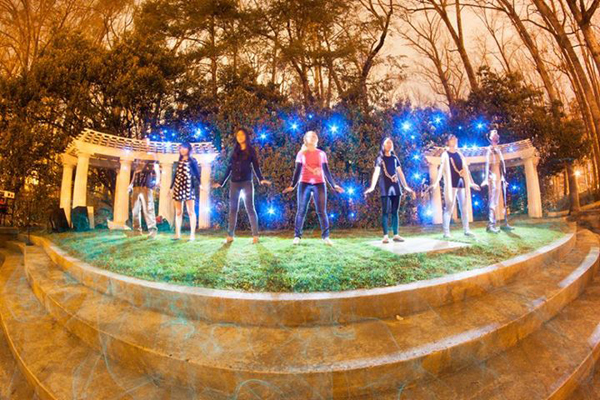Damnnnnn….. this was a difficult contest to judge! There were SO MANY good images this month we had to pull together a panel of five judges to make a final decision. After some heated debate we finally came to a consensus and the winner is… Jester Lights for this stunner of an Interdimensional light painting portrait! Funny thing about this image is it came together on the fly while Jester was actually working on a different idea all together. Here is a little background on this image from the man himself:
“I was working on my kaleidoscope-double exposure with my friend but got confronted with some issues. After several tries I decided to test a little diffuser made of little “verrines” with clear tape on my Coast TX10 I had built the afternoon before. It was the perfect fit for this light, it gives three more colors to the 4 already available. I told my freind to take a pose “as if he was stepping through an inter dimensional portal”. At first I used the white leds to light him expect his left leg then I put the diffuser on the light. I began with the dark blue, drawing a large circle behind him but in front of his left leg, then I had the green light, but together with the blue led on, it creates a light blue I really really like. Then I began drawing smaller circles, but with little waves in them and pointing the light toward and backward the objective. As I drew the smallest circles, I turned the white leds in the back of my friend in order to create a “bright spot” behind him, as if coming through a light tunnel. I liked his jacket and hood, it reminded me of a “Doctor Who-esque” figure.
F6
ISO 100
100 second exposure
For this winning image Jester Lights will receive a LPP prize pack filled with treasures from our sponsors COAST Flashlights, Neon Flexible, and LED Flexible!
To see more from Jester Lights work check out his website www.jester-lights.fr his LPWA page HERE, or his Facebook Page HERE!
Click here to see the current contest theme and find out how to enter to win your LPP prize pack!



































































